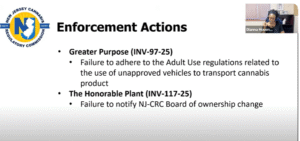From microdosing pre-workout to CBD-infused recovery plans, cannabis is carving out a niche in the world of health, wellness, and exercise.
More cannabis consumers today are treating the plant as a serious part of their fitness and wellness routine as a tool to improve strength, balance, and recovery.
But not all cannabis consume is the same. Not all products are made for people who care about performance. Understanding how different cannabinoids interact with your body, when to consume them, and how to choose the right product is key to building a balanced, cannabis-informed fitness lifestyle.
How Cannabis Affects the Body During Movement
When you consume cannabis, you’re interacting with the Endocannabinoid System (ECS). It’s a network of receptors throughout your body that help regulate mood, sleep, pain, inflammation, motor control, and more.
The most common cannabinoids are:
- THC: Known for its psychoactive effects. It can increase focus, reduce anxiety, or sometimes impair coordination, depending on the dose and timing.
- CBD: Non-intoxicating. Often consumed for reducing inflammation, soreness, and mental stress after workouts.
In lower doses, THC may help some consumers tune into their body more deeply during exercise. This is true especially during slower exercises like yoga, stretching, or functional strength training. However, too much THC can induce sleep, dizziness, delayed reactions, and poor motor control. So, dosage matters.
Should You Consume Cannabis Before Working Out?
Many cannabis-friendly athletes consume small amounts before workouts to stay calm and mentally present. This is especially common before:
- Yoga or mobility training.
- Bodyweight strength routines.
- Martial arts or flow-based sports like jiu-jitsu or parkour.
If you’re using cannabis before exercise:
- Stick to low doses, single puff, or edible with less than 5mg THC.
- Try balanced or CBD-heavy strains like Harlequin or Cannatonic.
- Avoid couch-locking Indicas that are designed for that purpose.
Timing also matters. Inhaled cannabis (smoke or vapor) kicks in within 5–10 minutes. Edibles take longer, sometimes 1–2 hours, and are harder to dose consistently, which can be risky before a workout.
During the Workout, Tread Carefully
Most consumers don’t consume during workouts unless they’re doing longer, lower-intensity activities like:
- Hiking or trail walking
- Long-distance cycling
- Climbing sessions
For high-intensity lifting, running, or competitive sports, cannabis during exercise can dull reflexes and reduce reaction time
If balance training is your focus, like slacklining, surfing, or tai chi, light THC consumption may help consumers reduce self-consciousness and tune into body mechanics. But it’s good only when consumed responsibly and with awareness of how your body reacts.
After-Workout Recovery is Where Cannabis Shines
Many consumers incorporate CBD into post-exercise recovery for its anti-inflammatory and calming properties. Common recovery practices include:
- CBD topicals for joint and muscle soreness.
- CBD oil/tinctures to improve sleep quality and reduce muscle spasms.
- THC and CBD blends for full-body relaxation after intense sessions.
Some consumers also report that better post-workout appetite regulation and sleep are critical components of effective strength and recovery plans.
Cannabis isn’t the only compound being explored here. Research-only substances are being studied for their potential to promote muscle retention and physical endurance. While not for human consumption, their rising popularity reflects just how serious the wellness space has become about science-backed enhancement.
Choosing the Right Product
Not all cannabis or hemp products are built for people who care about balance, form, or mobility. Some warning signs to look for:
- No breakdown of THC/CBD percentages.
- No third-party lab testing.
- Flashy branding with no ingredient transparency.
- Products from big brands sold as “wellness” filled with filler oils or sugar.
Instead, look for:
- Lab-tested products with full cannabinoid and terpene profiles.
- THC/CBD ratios are clearly stated.
- Brands that educate consumers.
- Lightweight, low-dose formats (like 2.5mg mints or microdosed edibles).
Dosing and Tolerance
Like any supplement, cannabis consumption varies. Some need less, others need more but more is not always better. Remember:
- Start low and go slow, especially with new strains or edibles.
- Track your body’s response.
- Alternate cannabis and non-cannabis training days.
- Don’t assume a higher dose means better performance.
Over time, consumers build tolerance. Cycling off cannabis occasionally can help reset your response and keep the benefits sharp.
Cannabis, when consumed wisely, can support a stronger, more balanced lifestyle. It helps us show up for it with more awareness, less stress, and deeper connection to our own body.











